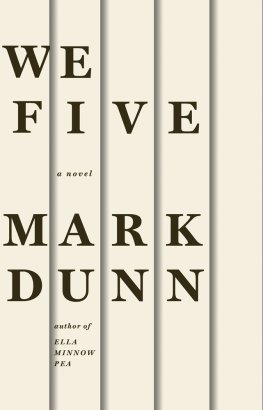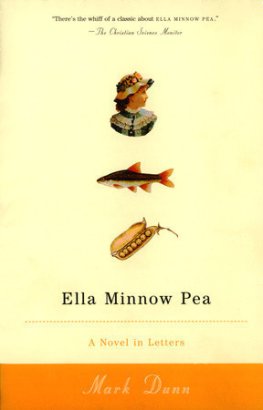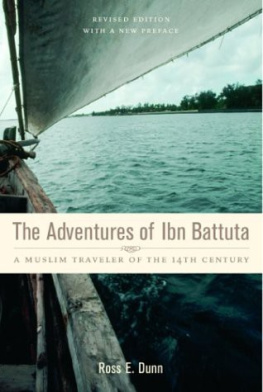Mark Dunn
American Decameron
For my nephews (who remain little boys in my heart):
Daris, Ryan, Bren, and Zach,
and to the memory of Chris, the little boy who left us too soon
As its title suggests, American Decameron is comprised of one hundred short stories, each either set in the United States or featuring Americans in far-flung places, and each assigned to a different year of the twentieth century, which historians often refer to as the American Century. Although the stories here are presented chronologically, it isnt necessary for them to be read sequentially, with the exceptions of 1901: Arboreal in Texas, and 2000: Convergent in Connecticut, which serve as prologue and epilogue for the book and should be read first and last, respectively.
The stories, though discrete in terms of time and place, tone and subject matter, are complementary components of a singular journey through the century now past. Together, the one hundred different narratives create a patchwork of American life in an era that seems at times familiar, at other times wholly archaic compared to the way we live our lives today.
While it was never my intention to write a different story on every aspect of life in the United States during the twentieth century (although I have achieved my personal goal of setting at least one story in each of the fifty states of our union and Washington, D.C.), I have tried very hard not to tell the same story twice. Some of my stories are subversive, and with a tip of the auctorial hat to Mr. Boccaccio, who penned the original Decameron in the fourteenth century, I have even dropped a handful of purposefully naughty tales into the mix. (Parents and teachers are advised to preview a story before sharing it with a young reader.)
Obviously, these stories are greatly informed by my own interests. On the other hand, Ive made a deliberate effort to expand those interests so as to be as catholic as possible. My goal has always been to create a work of fiction that my readers will enjoy both for its uniqueness (Gnter Grasss My Century, published in 1999, is constructed upon a similar concept, but is laid out with intentional economy; few of Grasss one hundred historic and social portraits of Germany through the past century are longer than three pages), as well as for the worth of its individual constituent stories.
Although fantasy, the occult, and science fiction have always interested me, these are literary genres youll have to seek elsewhere. American Decameron is about people who either really existed in that bygone century, or could have existed. All of my characters feet are planted firmly (if sometimes a bit unsteadily) on terra firma. (The two literal exceptions would be 1915 and 1945, which take place in the Atlantic and Pacific oceans, respectively.) If you have any doubt as to which category a character in a particular story belongs real or not real do the twenty-first century thing: Google him. I have not been at all shy about appropriating flesh-and-blood historical personages to use as characters in my stories.
A good rule of thumb here: If something sounds too incredible to be believed, it probably really happened.
And if you end up enjoying this book half as much as I enjoyed writing it, then Ill be a happy man indeed. You might even encourage me to try my hand at the nineteenth century. (Did I actually say that?)
Mark Dunn
Gail Hoyt came into this world on March 1, 1900. There being no Galveston County Records Office at the time, scrawled mention of her birth appears only in the baptismal ledger of the church where her father and mother worshipped, Tremont Ecumenical Chapel. The minister, stubbornly insistent that 1900 was a leap year just as was every other year divisible by four, inked next to her name the date February 29, 1900.
The minister was wrong. There was no leap day in 1900.
Gail Hoyt nearly left this world that same year on the occasion of the Great Galveston Hurricane, which blew in with historic fury and killed thousands of Gails fellow Galvestonians including both of her parents. The swaddled child was deposited high within the brachial embrace of a storm-denuded live oak tree. Perhaps it was not the storm itself that placed her there; hurricanes have personalities far less mercurial than tornadoes, which have been known in their more erratic moments to transport babies unscathed to all manner of remarkable resting places. More than likely it was someone who did it someone who perhaps had escaped the rising floodwaters with the little girl tucked under arm, only to be whisked by wind or wave into oblivion.
Much has been written about the Great Galveston Hurricane. And no small measure of ink and typewriter ribbon carbon has also been devoted to the Rock-a-bye Girl, as she would soon and ever thereafter be called a girl who from that point forward was to spend her life ascending things, and gazing down at the world from great heights. Like the sailor who rejected solid ground for the constant pitch and roll of the restless sea, Gail Hoyt sought the vault of the sky and the birds-eye view, some special, lofty aerie to call her own.
The Rock-a-bye Girl would grow up to turn her love of the towering and the altitudinous into both vocation and avocation. There would be very few men in her life capable of climbing to such heights as she, but those who did make the brave ascent found favor in Gails embracing arms. Two in particular won Gails heart for a time: a circus tightrope walker and a celebrated aviator. There was another man whom she coaxed to the top of flagpoles in the madcap twenties, but he plummeted with the stock market, the loss of his family nest egg sending him into a swan dive over the pavement of Upper West Side Manhattan.
High upon cliffs and hilltops and towers Gail exalted herself, for the young woman had no fear of falling none whatsoever. She was human avatar for a nation that was also on the ascension a country that sought to climb and clamber its way up through this new century to sublime heights of its own.
Born with the century, said Mrs. Pell, administrator of the Seaside Home for Storm-orphaned Girls, an institution of that womans recent founding. And she will grow old with that very same century the American Century. Dont you agree, my little Rock-a-bye Girl? Mrs. Pell nuzzled the baby, nose to nose like a Maori, and then lifted her from the crib she shared with two other orphaned girls of nearly the same age and unfortunate circumstances. As Mrs. Pell raised Gail high above her head, the child who had been sluggish and largely unresponsive curled her little lips into a simper of infant delight, and before Mrs. Pell could put her down, was giggling in bubbly bursts of baby glee. Perhaps Gail was imagining in her tiny inchoate brain that she was a bird taking wing (for there was a recurring pattern of birds in flight upon the wallpaper in the room). Overhead was a gasolier and Gail reached for it, as if she might swing monkey-like from its brass hardware.
What an extraordinary child! marveled Miss Falcongentle, assistant to Mrs. Pell, as she took the baby from her middle-aged employeress and held her aloft as well. And all was fine and gay on that day in early 1901 when Gail was just ten months old. That day would shine in sharp contrast to the one that came later in the year a day that would send Gail upon a very different path than Mrs. Pell had first sought for her.
But let us tarry for a few moments longer on that day upon which Gail made infant claim upon the supernal: January 2, 1901, which depending upon which side of the table in the Seaside Home for Storm-orphaned Girls dining room one sat was either the second day of the new century or the three-hundred and sixty-seventh.













